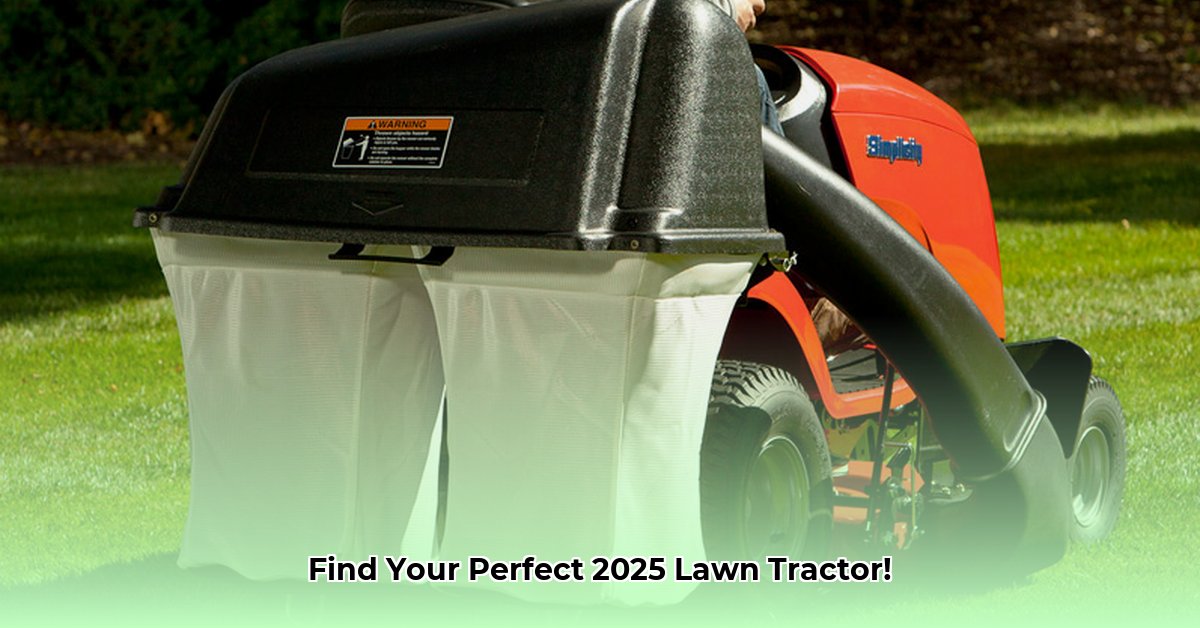
Choosing the Right Riding Lawn Mower Bagger: A Comprehensive Guide
Shopping for a lawn tractor grass bagger can be daunting. This detailed review and instructional guide will help you navigate the options and select the perfect bagger for your needs, whether you have a small yard or a sprawling landscape. We'll cover capacity, materials, ease of use, compatibility, maintenance, and troubleshooting, empowering you to make an informed decision. For more in-depth information, check out this helpful guide.
Capacity and Size: Finding the Right Fit for Your Lawn
The first crucial factor is your lawn's size. A small yard requires a smaller bagger, while larger lawns benefit from high-capacity models. Two-bin systems are ideal for smaller lawns, offering convenient emptying. Three-bin systems, on the other hand, are better suited for larger lawns, reducing the frequency of emptying. Always check the bagger's capacity (measured in cubic feet); a higher number means fewer emptying trips. For example, a 6 cubic foot bagger will require emptying less often compared to a 3 cubic foot bagger. Isn't it frustrating to empty the bagger constantly?
Material Matters: Durability and Longevity
Grass baggers are constructed from various materials, primarily durable polyester or mesh fabric. Polyester generally provides superior durability and withstands wear and tear better than mesh, which may be lighter but less long-lasting, especially on uneven terrain. Consider the terrain when selecting your bagger. Before purchasing, check the warranty; a robust warranty reflects the manufacturer’s confidence in the product's durability. A longer warranty usually indicates superior quality and a more durable product.
Ease of Emptying: Simplifying a Routine Task
Emptying the bagger is a frequent chore. Look for baggers with features that simplify this task, such as lift mechanisms or hinged doors. A poorly designed bagger can make this simple chore unnecessarily difficult. Imagine spending minutes emptying a bagger compared to doing it in seconds—what would you prefer?
Compatibility: Ensuring a Perfect Fit
Before purchasing, verify compatibility with your lawn tractor. Check the manufacturer's website or product description. Incompatible baggers can lead to operational issues, reduced efficiency, and even equipment damage. Reading the fine print carefully is imperative. Why waste money on an incompatible bagger?
Installation: A Step-by-Step Guide
Installing a new bagger is typically straightforward. Always follow the manufacturer's instructions. A general guide includes:
- Read the instructions: Always consult your bagger manual.
- Alignment: Align the bagger with your mower's discharge chute.
- Securing: Use provided fasteners to securely attach the bagger.
- Verification: Ensure a tight, leak-free connection.
- Safety: Always turn off the mower before installation.
Maintenance: Extending Your Bagger's Lifespan
Regular maintenance is crucial for extending your bagger's life. Key maintenance steps include:
- Regular Inspections: Check for wear and tear.
- Cleaning: Empty clippings after each use to prevent mildew and maintain lightweight handling.
- Fasteners: Periodically check all fasteners for tightness and security.
- Storage: Store the bagger in a dry location when not in use, protecting it from the elements. Proper storage can significantly extend the bagger’s useful life.
Two-Bin vs. Three-Bin Systems: A Detailed Comparison
| Feature | Two-Bin System | Three-Bin System |
|---|---|---|
| Capacity | Smaller | Larger |
| Emptying Frequency | More frequent | Less frequent |
| Maneuverability | Generally easier to handle | Might be a bit more cumbersome |
| Cost | Usually less expensive | Usually more expensive |
| Best For | Smaller lawns, less frequent mowing | Larger lawns, more frequent mowing |
Troubleshooting Common Issues
- Clogging: Most likely when mowing wet grass. Mow only when grass is dry, or consider a mulching mower.
- Poor Fit: Double-check compatibility and re-install according to instructions.
- Gasket Issues: Inspect gaskets for damage and replace as needed to prevent leaks.
Key Takeaways: Making the Right Choice
- Lawn Size: Determines the needed bagger capacity. Larger lawns require higher capacity.
- Material Durability: UV-resistant materials extend the product lifespan.
- Compatibility: Essential for proper functionality; always verify compatibility.
- Ease of Use: Prioritize models that are easily installed, emptied, and maintained.
Choosing the right bagger simplifies lawn care, ultimately saving you time and ensuring efficient operation. By carefully considering these factors, you can select the perfect bagger for your lawn care needs. A well-chosen bagger improves your mowing experience and protects your equipment.